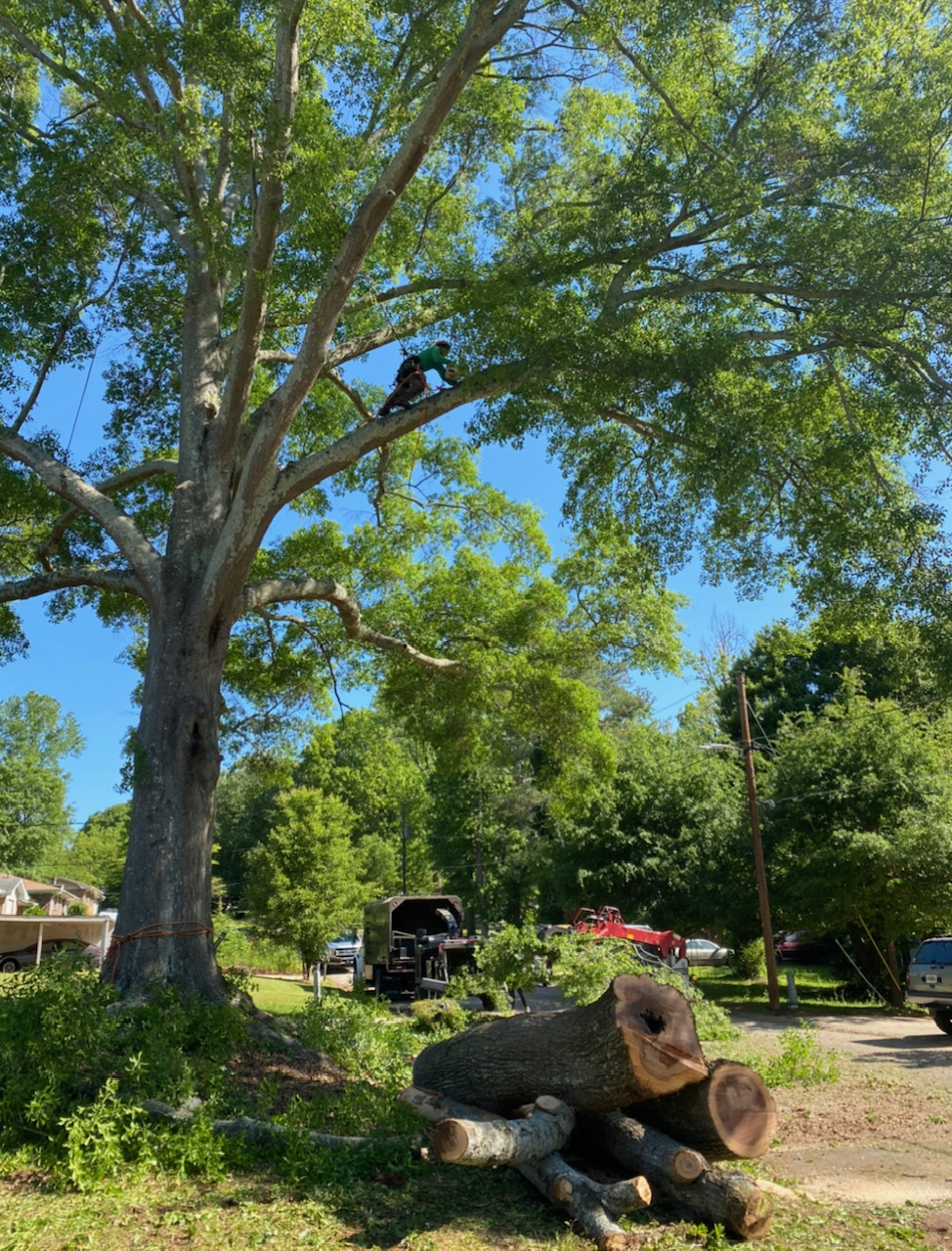24/7 Emergency Service
24/7 Emergency Service

Storms can wreak havoc on our homes and surroundings, leaving a trail of destruction in their wake. Among the casualties are often the trees that beautify our landscapes and provide shade and shelter. While fixing a broken window or a damaged roof might seem straightforward, knowing how to care for a storm-damaged tree is less intuitive. As a reputable tree care company, Southern Star Tree can assess the severity of the damage and implement strategies to nurse the tree back to health. If the damage is irreversible, complete tree removal may be the safer option. Let's explore the steps to save a damaged tree and restore its vitality.
The first step in saving a storm-damaged tree is to assess the extent of the damage. Carefully inspect the tree for broken branches, torn bark, or a split trunk. Minor damage, like small broken branches, can often be pruned away with little long-term impact. However, if the tree has sustained significant structural damage, such as a large section of the canopy being torn off or a deep split in the trunk, the chances of recovery are reduced. In such cases, professional advice from an arborist might be necessary to determine whether the tree can be saved or if removal is the best course of action.
Once you've assessed the damage, the next step is to prune any broken or dangling branches. This is crucial for the tree's recovery, as damaged branches can pose a safety hazard and harm the tree if left unchecked. Use sharp pruning shears to make clean cuts at the base of the broken branches, ensuring that you do not leave any stubs, as these can become entry points for pests and diseases. If you prefer a hands-off approach, hire certified arborists to ensure proper pruning and encourage new growth.
Storms can cause the bark of a tree to tear or peel away, leaving it vulnerable to infections and pests. If the damage is minor, you can carefully trim the loose bark back to the healthy wood, smoothing the edges to allow the tree to heal more effectively. For more extensive damage, it's essential to avoid using wound paint or sealant, as these can trap moisture and create an environment conducive to decay and tree removal emergencies. Instead, allow the tree to heal naturally, as it can remarkably protect itself from further harm.
A tree with a split trunk may still be saved if the damage is not too severe. To support the tree, you can use cabling or bracing, which involves installing cables or rods to stabilize the tree and prevent further splitting. This method requires precise installation and should ideally be done by a professional arborist, as improper cabling can do more harm than good. If the split is too deep or compromises the tree's structural integrity, removal may be the safer option to prevent potential hazards.
After addressing the immediate damage, it's essential to provide ongoing care to help the tree recover. Tree service professionals recommend watering the tree regularly, especially during dry periods, to ensure it has the resources it needs to heal. Mulching around the tree's base can help retain moisture and protect the roots. Also, avoid applying fertilizer immediately after storm damage, as the tree's primary focus should be recovery rather than new growth. Patience is vital, as the tree may take several seasons to regain its strength fully.
Storm damage can devastate trees, but with the right approach and the expertise of a trustee and tree care company, you can save and nurse affected trees back to health. Contact us at the Southern Star Tree and schedule a consultation with our certified arborists to restore your landscape to its former glory. As a professional tree service, we provide regular care to ensure your trees stand strong and healthy year long.
15 April, 2025
Trees are prized treasures that require regular care to maintain good health and vitality for many years to come. At Southern Star Tree, we leverage extensive expertise and knowledge to help you preserve ...
Read More08 April, 2025
Do you have young trees on your residential or commercial property? If so, scheduling regular trimming with a trusted tree care company in Brookhaven, GA is vital to ensure healthy growth and longevity. At ...
Read More